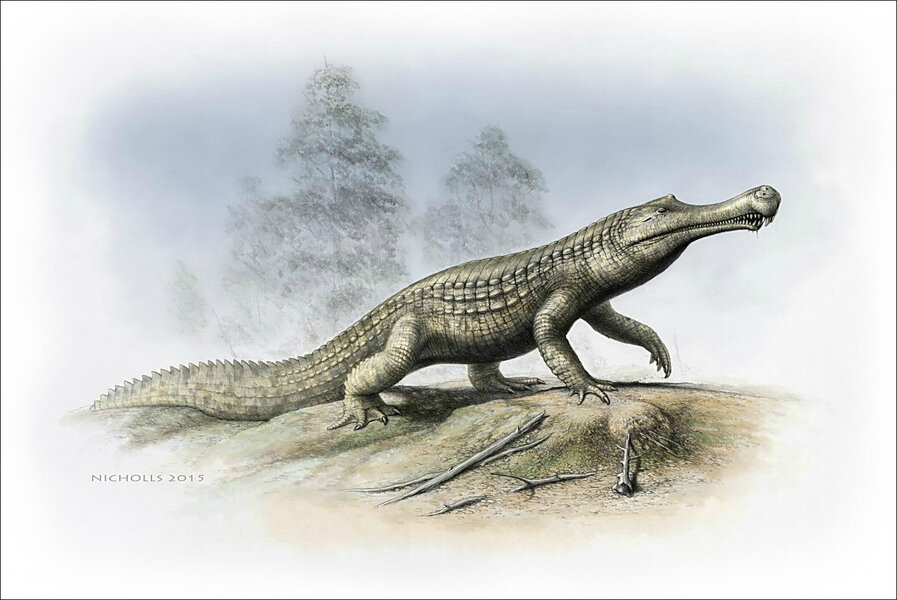Could climate change drive crocodiles back to North America and Europe?
Loading...
Most people know that global warming spells bad news for polar bears and other creatures that depend on Arctic sea ice. But it could have an unexpected effect on a kind of animal rarely considered in climate change debates: crocodiles.
According to a new study, climate change could lead to a huge population increase and diversification of crocodile species in North America and Europe.
In the past, changing sea levels and global cooling over millions of years caused a significant decline in the number of crocodile species and their relatives.
Many crocodilians – present-day species of crocodiles, alligators, caimans and gavials – survived the mass extinction that wiped out almost all of the dinosaurs about 66 million years ago. Today, though, only 23 species survive. Six of these species are classified as critically endangered, and a further four are classified as either endangered or vulnerable, scientists say in the new research.
During the study, the researchers from Imperial College London, the University of Oxford, the Smithsonian Institution and the University of Birmingham created a dataset of the entire known fossil record of crocodilians and their extinct relatives. They analyzed data about Earth's ancient climate in order to see how the group responded to past shifts in climate.
The researchers found that declining temperatures had a major impact at higher latitudes in areas now known as Europe and America. At lower latitudes, the decline of crocodilians was caused by areas becoming increasingly arid. For example, 10 million years ago, Africa was filled with vast, lush wetlands; however, these wetlands were replaced by the Sahara desert. In addition, fluctuations in sea levels affected crocodilians which were widespread across the oceans.
"Millions of years ago, these creatures and their now extinct relatives thrived in a range of environments that ranged from the tropics, to northern latitudes and even deep in the ocean.” said Dr. Philip Mannion, study co-author from the Department of Earth Science and Engineering at Imperial College London, in a news release. “However, all this changed because of changes in the climate, and crocodilians retreated to the warmer parts of the world."
Being cold-blooded, crocodiles rely on the sun for warmth. So as the northern hemisphere cooled, the crocs went south – to Africa and South America.
According to the study, extinct crocodilians occupied a more diverse range of habitats in the past. But now, they inhabit warm, wet parts of the world, where they are threatened by humans. Study co-author Jon Tennant of Imperial College explained to Forbes, “destruction of their environments is also clearly going to be a major issue both now and in the future and we should be looking not just to conserving crocodiles, but the whole environment and ecosystems in which they live.”
In the future, the researchers suggest that a warming world caused by global climate change may favor an expansion of crocodilians outside of the tropics. But that will depend on human activities such as habitat destruction, which might counter the spread.







